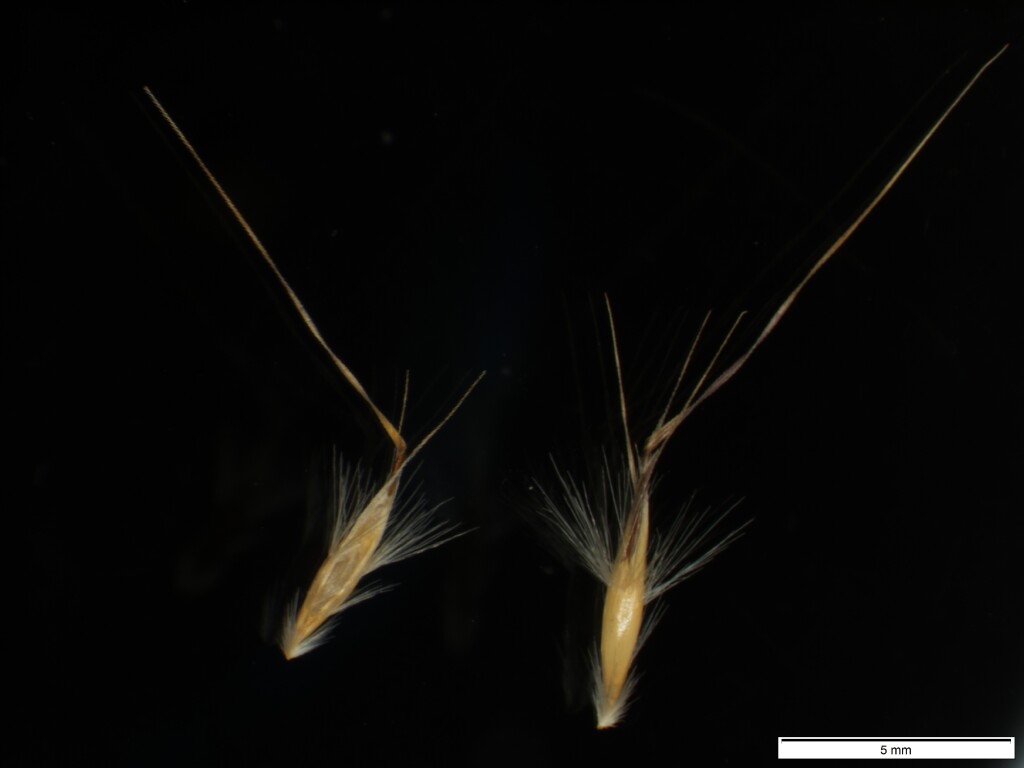Rytidosperma laeve
(Vickery) Connor & EdgarTufted perennial. Culms to 60 cm high. Leaves glabrous to lightly hairy; blade flat or channelled, rarely finely inrolled, to 20 cm long and 2 mm wide. Panicle typically rather dense and narrowly ovate to linear, 3–6 cm long. Spikelets (particularly margins of glumes) often purplish, mostly 4–6-flowered; glumes subequal, narrowly acute to acuminate, 11–20 mm long; lemma 4–5.5 mm long, usually strongly contracted toward the base, with a well-defined upper row of hairs, the lower row reduced to marginal tufts (occasionally with a few hairs nearer the centre), 1.5–2.5 mm above the callus tuft; lateral lobes erect, 8–12 mm long, the setae about half this length; central awn exceeding lateral lobes by 5–10 mm; palea lanceolate to narrowly obovate, exceeding sinus by up to 2 mm. Flowers Sep.–Nov.
LoM, Wim, GleP, VVP, VRiv, GipP, OtP, WaP, Gold, CVU, GGr, DunT, NIS, EGL, EGU, HSF, HNF, OtR, Strz, MonT, VAlp. Also SA, NSW, ACT, Tas. Locally common through cooler districts in the east but apparently uncommon and of scattered distribution in the west.
In alpine or montane grasslands, the common form has glabrous, rather stiff leaves, but in the lowlands where the grass occurs typically in damp sites, forms with hairy, narrower foliage are more common. Occasional specimens show an approach to other species (notably Rytidosperma erianthum, R. caespitosum or R. duttonianum), in the lemma having a partially developed lower ring of hairs. These may represent hybrids. The incomplete row of hairs just above the callus can lead to confusion with R. robertsoniae, see key for differences.
Walsh, N.G. (1994). Poaceae. In: Walsh, N.G.; Entwisle, T.J., Flora of Victoria Vol. 2, Ferns and Allied Plants, Conifers and Monocotyledons, pp. 356–627. Inkata Press, Melbourne.
 Spinning
Spinning


